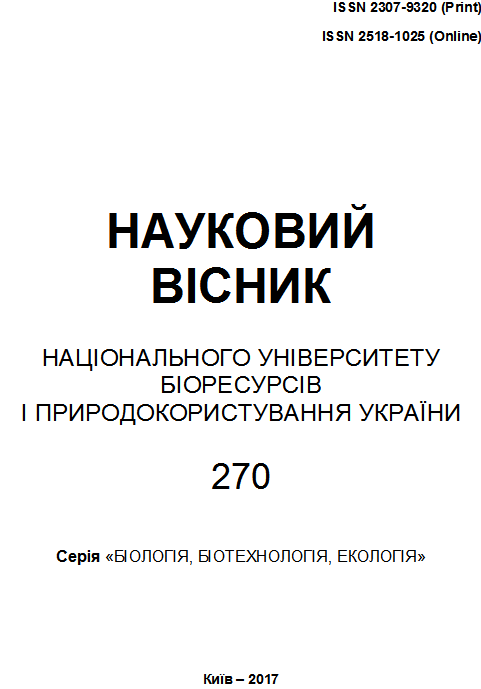FORMATION OF SURFACELY PROGRAMMED, CHEMICAL CREATED SITES AND WAYS OF ESTIMATION OF THEIR SELECTIVITY TO DIFFERENT MYCOTOXINES
Abstract
The problem of mycotoxins as potential food contaminants has become widespread in violation of the requirements of intensive processing technologies for agricultural crops and the loss of plant resistance to phytopathogens. Growth in the content of mycotoxins in food is also directly related to the uncontrolled use of nitrogen fertilizers and pesticides. The article presents experimental studies on the search for the most effective ways of forming selective chemical sites aimed at quantifying individual mycotoxins using sensory technology. It has been established that the registration of the formation of the corresponding specific complex can be carried out potentiometrically and optically on the basis of the PPR principle. It was revealed that when registering the specific complex created for and using the PPR principle, the transducer surface must be pretreated with PAA. A tried-and-true method of forming selective matrix-programmed surfaces can be recommended for the sake of terrestrial transducer surface sensors aimed at screening mycotoxins among environmental objects. It is determined that the surface structures programmed can be restored for reuse by washing them with acetonitrile or methanol. When reused more than 10 times the specific signal changes only within 10%.
References
Starodub N. F., Pilipenko L. N., Egorova A. V., Pylypenko I. V., Goyster O. S., Khmelnitsky G. O. (2008). Analiz micotoxinov: podgotovka prob [Mycotoxin analysis: preparation of samples]. Biotechnology. Vol. 1, No. 1. - P. 106-115.
Starodub N.F., Pylypenko I.V., Pylypenko L.N., Mel’nichenko M. M., Nabok A.V. (2010). Biosensors for the Determination of Mycoyoxins: development, efficiency at the analysis of model samples and in case of the practical applications. Lecture Notes of the ICB, 86. Р. 81-101.
Nabok A.V., Tsargorodskaya A., Holloway A., Starodub N.F., Gojster O. (2007). Registration of T-2 mycotoxin with total internal reflection ellipsometry and QCM impedance methods. Biosensors and Bioelectronics, №22. Р. 885-890.
Starodub N. F., Taran M. V., Shpirka N. F., Shavanova K. E. (2016). Fiber optic SOS-type biosensor for the control of the genotoxicity of some environmental objects. World journal of engineering research and technlogy, Vol. 2. P. 123-130.
Smirnov V., Zajchenko F., Rubegnjak I. (2000). Mycotoxins: fundamental and applied aspects. Modern problems of toxicology, №1. Р. 5-12.
Downloads
Published
Issue
Section
License
Relationship between right holders and users shall be governed by the terms of the license Creative Commons Attribution – non-commercial – Distribution On Same Conditions 4.0 international (CC BY-NC-SA 4.0):https://creativecommons.org/licenses/by-nc-sa/4.0/deed.uk
Authors who publish with this journal agree to the following terms:
- Authors retain copyright and grant the journal right of first publication with the work simultaneously licensed under a Creative Commons Attribution License that allows others to share the work with an acknowledgement of the work's authorship and initial publication in this journal.
- Authors are able to enter into separate, additional contractual arrangements for the non-exclusive distribution of the journal's published version of the work (e.g., post it to an institutional repository or publish it in a book), with an acknowledgement of its initial publication in this journal.
- Authors are permitted and encouraged to post their work online (e.g., in institutional repositories or on their website) prior to and during the submission process, as it can lead to productive exchanges, as well as earlier and greater citation of published work (See The Effect of Open Access).

